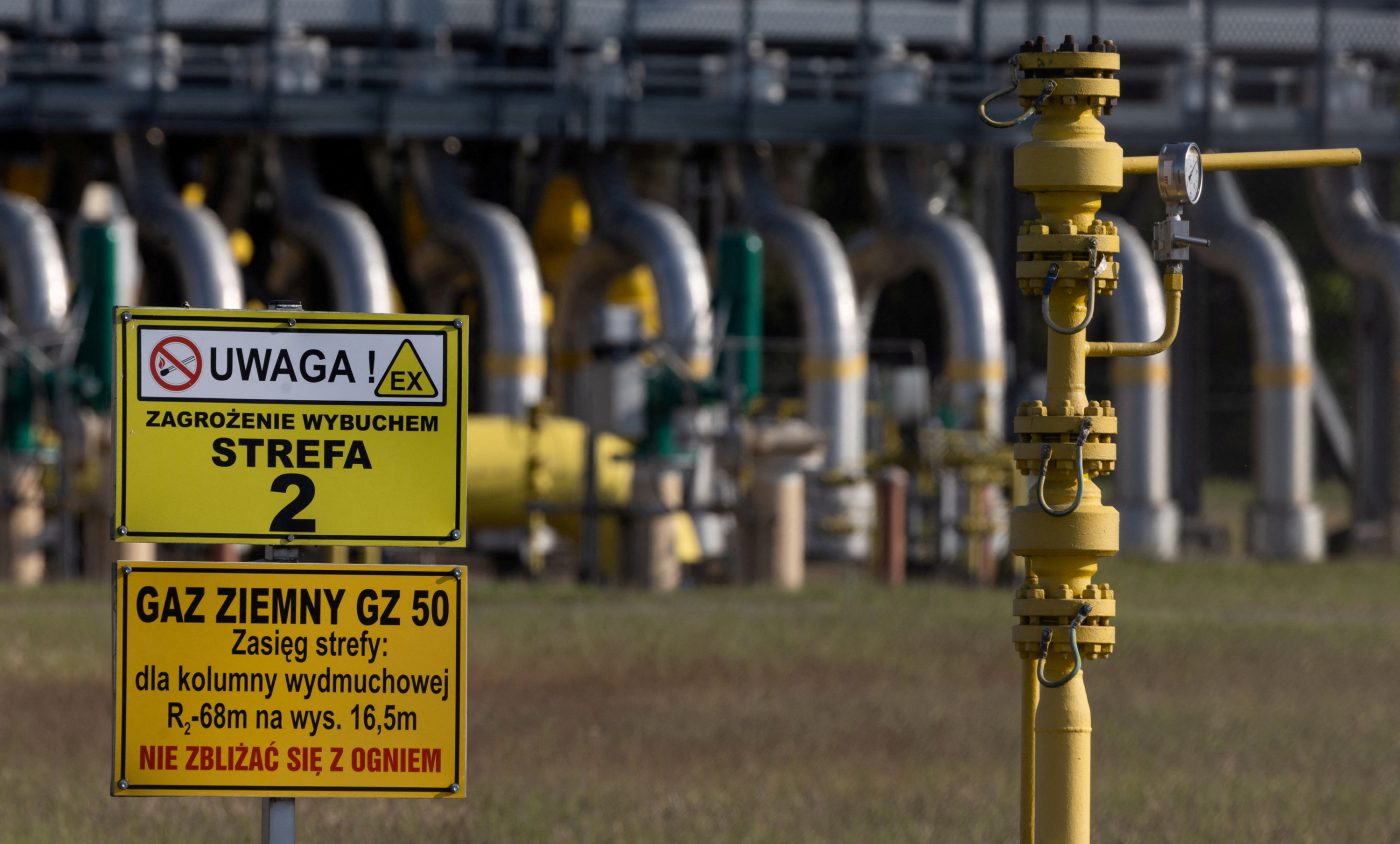Russia’s military is doubling down on attacks to degrade Ukraine’s energy system. This campaign has increased in scope from last year, now seeing entire thermal power plants and larger-scale energy installations facing destruction rather than smaller electrical grid substations and transformers – with timescales and costs to rebuild skyrocketing.
There is another emerging trend. Russia is also aiming at large-scale gas storage facilities located in Western Ukraine that contain gas for Central and Western Europe. This includes strikes against the Ukrainian underground storage system (UGS) for natural gas, operated by Ukraine’s state-owned gas firm Naftogaz, including a facility in Lviv Oblast on 11 April.
Russia’s attacks have a dual objective. First, they further exacerbate Ukraine’s internal energy crisis just as Kyiv begins its annual springtime drive to store gas to help the country survive winter 2024-25. Simultaneously, the campaign underscores again Moscow’s energy weaponization against the rest of Europe, given that these storage sites have been partially booked by European gas traders, including 2.5 billion cubic meters (bcm) in 2023 alone, which amounts to around 10% of Ukraine’s storage capacity.
These attacks represent the first time that such a significant segment of Ukraine’s overall gas network relied on not just by Ukrainians but several other European nations, has faced direct targeting by Putin’s forces.
Recall that although the Kremlin has fairly indiscriminately bombed electricity grid and power generation facilities over the past two years, one significant component of the energy infrastructure has conspicuously remained largely spared: the Ukrainian gas transmission system (GTS) itself, a strategic asset that Russia still relies on to deliver gas to European customers under the existing contract that was signed between Naftogaz and Kremlin-controlled Gazprom back in 2020.
The 2020 deal was for five years of continued Russian gas transit via the GTS; it expires in December. That means Europe is yet again facing the end of Ukraine’s historic role as Europe’s main transit conduit for Russian gas.
Ukrainian officials have been determined to jettison Kyiv’s decades-long role as a transit country for Russian gas to Europe, including a March declaration by Ukrainian energy minister German Galushchenko that “ . . . we have no plans to enter into any additional agreements or extend this [current] agreement.”
Despite that, Kyiv’s policy move is likely to face both political and — depending on Russia’s continued military strikes — technical impediments.
The Ukrainian GTS is not a single pipeline, but a vast network of large-diameter, high-pressure lines, some of which transit gas via principal trunklines from Russia to Europe, while simultaneously providing the necessary pressure to move gas into smaller distribution networks to Ukrainian end consumers.
Ukraine says the gas transmission system and underground gas storage facilities will work even if the transit system ends. Even so, if primary GTS trunklines are targeted by the Russians, the damage could throw this assessment into jeopardy, and harm internal Ukrainian energy security in the process.
Politically, some European states will pressure Kyiv to continue “business as usual” with Moscow. And while Russia’s share of EU imports slumped from 33% to less than 10% from late 2021 to late 2023, the value of its gas supplies has almost held up due to rising prices.
Naturally, Kyiv is keen to end this turbulent relationship, which not only fuels Russia’s war machine but has repeatedly been used for political blackmail, often leaving consumers without heating in the freezing winter months.
In 2022, just weeks after launching its full-scale invasion, Russia unleashed Europe’s largest energy crisis in recent memory, sharply cutting gas deliveries via its main pipeline routes (all under dubious political and technical justifications from Moscow) in a bid to strong-arm the West into reducing its military and humanitarian backing of Ukraine.
In response, the EU pledged to phase out the remaining Russian gas imports to the bloc not later than 2027, and more than a dozen large European buyers sued Gazprom for failing to honor its contractual obligations.
But memories of the 2022 energy crisis remain fresh in the mind and some clearly remain tempted to return to a diet of cheap Russian gas.
Countries including Austria, Slovakia, and Hungary are among those arguing they are unable to rapidly end their dependence on Russian gas, even though they have had two years to make alternative plans. Of course, each of these countries could secure alternative supplies from places like Norway, or tap into the global liquefied natural gas (LNG) market via the increasing number of such import facilities dotting Europe’s coastlines.
The real motive may be the large profits they can gain from retaining contractual agreements with Putin’s Russia, as well as time-honored Kremlin tactics of strategic corruption and elite capture for anything and anyone associated with Russian energy in Europe. The spreads between relatively cheaper Russian gas imports and expensive European market prices may even help Russia find new customers in the EU and beyond.
Kremlin-friendly governments like those in Hungary and Slovakia may meanwhile flex their policy muscles in an attempt to pressure Ukraine into extending the Gazprom transit contract. That carries clear risks that Russia could use Ukraine’s vast gas transmission system to rebuild its cratering EU market share.
Ukraine’s strongest Western supporters must fight this. Simultaneously, they must also resist Gazprom’s backdoor plan to “wash” its gas through a new Turkish gas hub, as these authors explained last year. Likewise, any attempt to revive gas export pipelines like Nord Stream 1 and 2.
To this end, urgent consideration should be given to the implementation of permanent US and EU blocking sanctions to ensure these pipelines never again menace European energy security.
There can be no return to business as usual with Putin on energy. For the sake of Europe’s energy and national security goals in the face of an increasingly belligerent Kremlin, this is an outcome that Transatlantic leaders must avoid at all costs.
Dr. Benjamin L. Schmitt is a Senior Fellow at the Department of Physics and Astronomy and the Kleinman Center for Energy Policy at the University of Pennsylvania, a Senior Fellow for Democratic Resilience at the Center for European Policy Analysis, a fellow of the Duke University “Rethinking Diplomacy” Program, and a Term Member of the Council on Foreign Relations. (Twitter: @BLSchmitt).
Dr. Aura Sabadus is a Non-resident Senior Fellow with the Democratic Resilience Program at the Center for European Policy Analysis. She works as a journalist specializing in European energy markets for the London-based Independent Commodity Intelligence Service (ICIS). (Twitter: @ASabadus).
Europe’s Edge is CEPA’s online journal covering critical topics on the foreign policy docket across Europe and North America. All opinions are those of the author and do not necessarily represent the position or views of the institutions they represent or the Center for European Policy Analysis.





